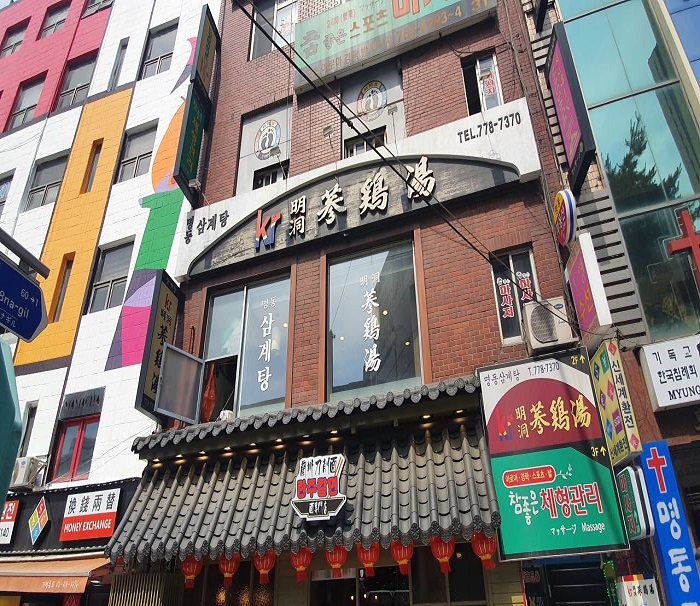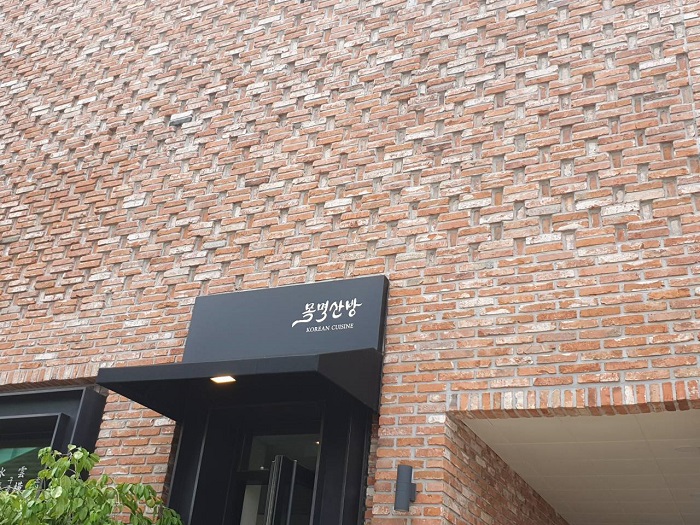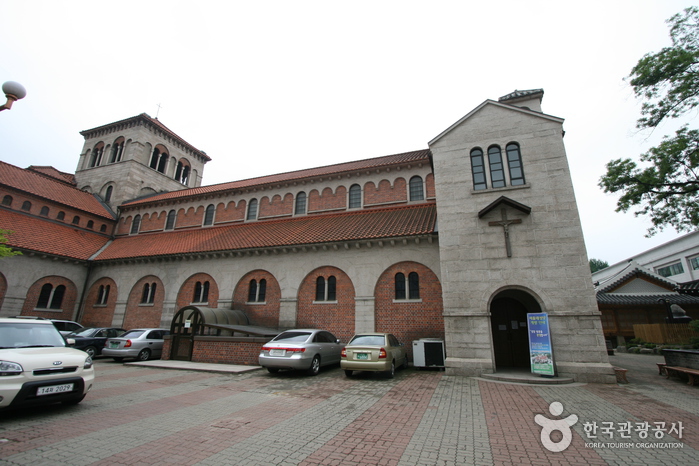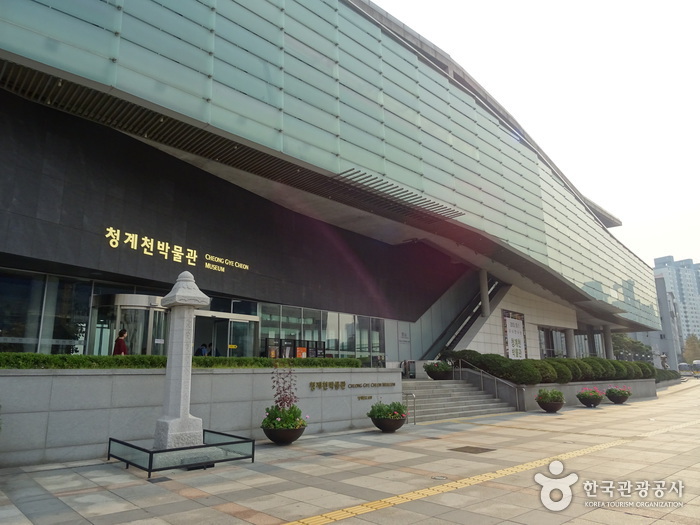Olens - Yaksu Branch [Tax Refund Shop] (오렌즈 약수)
2.9Km 2024-04-23
#103, 117, Dasan-ro, Jung-gu, Seoul
-
kr Myeongdong Samgyetang (kr명동삼계탕)
2.9Km 2021-05-12
49, Myeongdong, 8na-gil, Jung-gu, Seoul
+82-2-778-7370
It makes Samgyetang (Korean ginseng chicken soup) using herbal broth as a store with more than 20 years’ experience. This restaurant's signature menu is ginseng chicken soup. This Korean dishes is located in Jung-gu, Seoul.
Mongmyeoksanbang (목멱산방)
2.9Km 2024-03-07
71, Toegye-ro, 20-gil, Jung-gu, Seoul
+82-2-318-4790
Situated near Namsan Mountain, Mongmyeoksanbang specializes in bibimbap. Mongmyeok is the ancient name of Namsan Mountain. Bibimbap is a bowl of rice tossed with various vegetables, meat, sesame oil, and red chili paste, making it a nutritionally balanced dish. Their dishes are made with natural seasonings and seasonal herbs gathered from Jirisan Mountain. The soybean pasete and soy sauce are also handmade, and perilla oil and sesame oil are 99.9% natural, without artificial ingredients.
Hotel The Plaza (플라자호텔)
2.9Km 2019-02-07
119, Sogong-ro, Jung-gu, Seoul
+82-2-771-2200
The hotel is ideally situated in the center of Seoul, located close to many office areas, major banks, the hotel, and the city's main public transportation junctions. Namdaemun Gate and many shopping areas are not too far, making it convenient for business guests and tourists alike. Also, the hotel faces the Blue House and the former City Hall building directly at closer distance, completing a spectacular view over Seoul.
Seoul Cathedral Anglican Church or Korea (대한성공회 서울주교좌성당)
2.9Km 2020-03-30
15, Sejong-daero 21-gil, Jung-gu, Seoul
+82-2-730-6611
Seoul Cathedral Anglican Church of Korea began
construction under Mark Trollope, the third bishop of the Anglican Church of Korea, in 1922. It was designed by a English architect Arthor Dixon. Dedication ceremony of the church was held On May 2, 1926 when the construction work hadn't been completed yet. At that time, the church building was a 3-storey building with
a 992 m² floor size. Later in 1993, the original blue print of the church was found at a library in England and the construction resumed
and would be completed in 1996.
The church building is a harmonious combination of Romanesque and traditional Korean style. The exterior of the church is shaped like a cross with various lines placed in harmony. Inside the cathedral, there are 12 stone columns symbolizing the 12 apostles, a
mosaic of Jesus on the front wall, and a brass plate in commemoration of Mark Trollope. Under the brass plate, the
remains of the bishop Mark Trollope are enshrined.
* Size: B1-3F
* Building site area: 519㎡ (157 pyeong), Ground area 909㎡ (275 pyeong)
Cheonggyecheon Museum (청계천박물관)
2.9Km 2021-11-02
530, Cheonggyecheon-ro, Seongdong-gu, Seoul
+82-2-2286-3410
Cheonggyecheon Museum officially opened in October 2005. The museum’s long, glass exterior represents the flowing waters of Cheonggyecheon Stream, which runs through the heart of Seoul. The museum has a permanent exhibition hall, special exhibition hall, educational hall, and an auditorium. The museum contains visual representations of Seoul before and after the transition of Cheonggyecheon Stream. The permanent exhibition hall was remodeled in October 2015, and now offers even more ways to view the history of Seoul as shaped by Cheonggyecheon Stream.
OME Cooking Lab (오미요리연구소)
2.9Km 2020-03-18
35-1, Yangnyeongjungang-ro, Dongdaemun-gu, Seoul
+82-10-5060-5250
OME Cooking Lab offers a one-day class where participants can learn to cook Korean food. The participants will be able to learn from scratch, starting from choosing the right ingredients at Korea's local markets and interacting with the market's vendors. After the cooking session, participants can enjoy the meal in a hanok (traditional Korean house). Participants mostly consist of foreigners, and the class is offered in Korean, English, and Chinese.
Seoul Yangnyeongsi Market (서울 약령시장)
2.9Km 2021-06-09
10, Yangnyeongjungang-ro, Dongdaemun-gu, Seoul
+82-2-969-4793
"Yangnyeongsi," which literally means medicine city district, refers to a central Oriental medicine district formed near major cities where medicinal herbs are collected and produced. Yangneongsi were first established by royal order during the Joseon dynasty for the purpose of effective production, distribution and management of medicinal products and herbs.
Seoul Yangnyeongsi Market history is relatively short, having formed naturally in the mid-1960s by medicinal herb merchants who gathered here seeking to sell their products with the city bus terminal and Cheongnyangni Station as their central base. Originally, these merchants came to Seoul through the old Seongdong Station and Chyeongnyangni Station after the Korean War, seeking to sell medicinal herbs and vegetation products that were cultivated and collected in the Gyeonggi-do and Gwangwon-do regions. This small market that was once open on an empty plot of land was later authorized as an official market establishment. Road and railroad developments between Gangwon-do and Seoul were followed and by the 1970s, the market grew into what is now seen today. The name Seoul Yangnyeongsi Market was given by the Seoul mayor in 1995.
Davich Optical - Myeongdong Branch [Tax Refund Shop] (다비치안경 명동점)
2.9Km 2024-06-27
62, Sogong-ro, Jung-gu, Seoul
-
Bank of Korea Money Museum (화폐박물관)
2.9Km 2024-03-18
39 Namdaemun-ro, Jung-gu, Seoul
This Renaissance-style three-story stone building is the museum of the Bank of Korea. The older Bank of Korea was established as the central bank of the Korean Empire in 1909 and has been designated as a National Historical Site. During the Japanese colonial period, the bank was renamed the Bank of Joseon, and the building was used as the main and head office of the Bank of Korea until 2001. The building has been used as the nation’s Money Museum since June 2001 in celebration of the 50th anniversary of the Bank of Korea. The museum has 13 exhibition rooms on two floors, with one basement floor and two above-ground floors. It holds special exhibitions of various currency and art collections to provide domestic and foreign visitors with the opportunity to enjoy the history and culture of currency. Visitors can learn about the Bank of Korea and the central banking system, as well as how to identify counterfeit notes and how money is produced and circulated. It is also a good place for children to learn about currencies from around the world. Advance reservations are required, and parking is not available. The museum can easily be reached via subway by getting off at Hoehyeon Station (Seoul Subway Line 4) and exiting through Exit 7.
![Olens - Yaksu Branch [Tax Refund Shop] (오렌즈 약수)](http://tong.visitkorea.or.kr/cms/resource/53/2889253_image2_1.jpg)





![Davich Optical - Myeongdong Branch [Tax Refund Shop] (다비치안경 명동점)](http://tong.visitkorea.or.kr/cms/resource/98/2878598_image2_1.jpg)
 English
English
 한국어
한국어 日本語
日本語 中文(简体)
中文(简体) Deutsch
Deutsch Français
Français Español
Español Русский
Русский